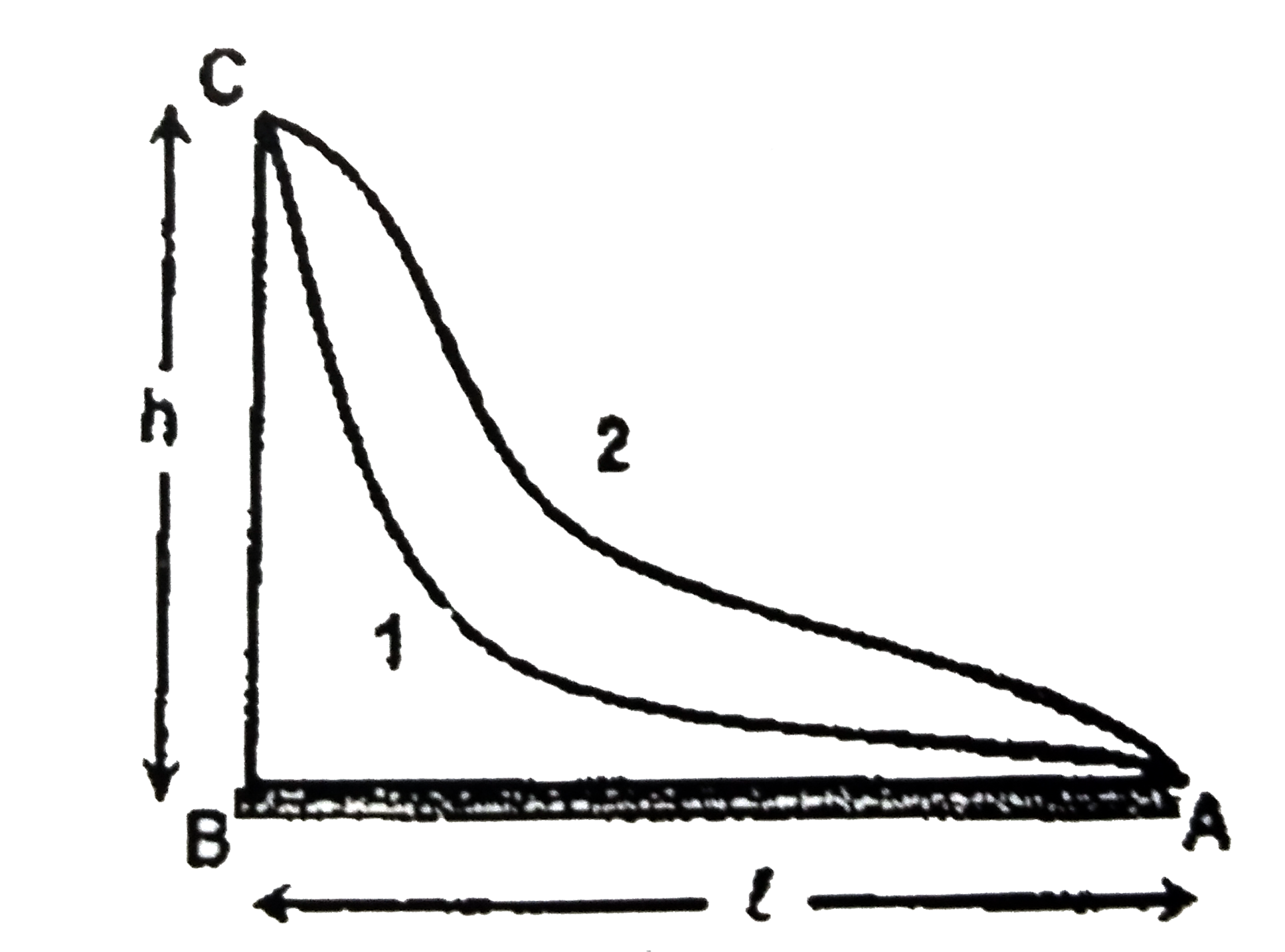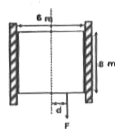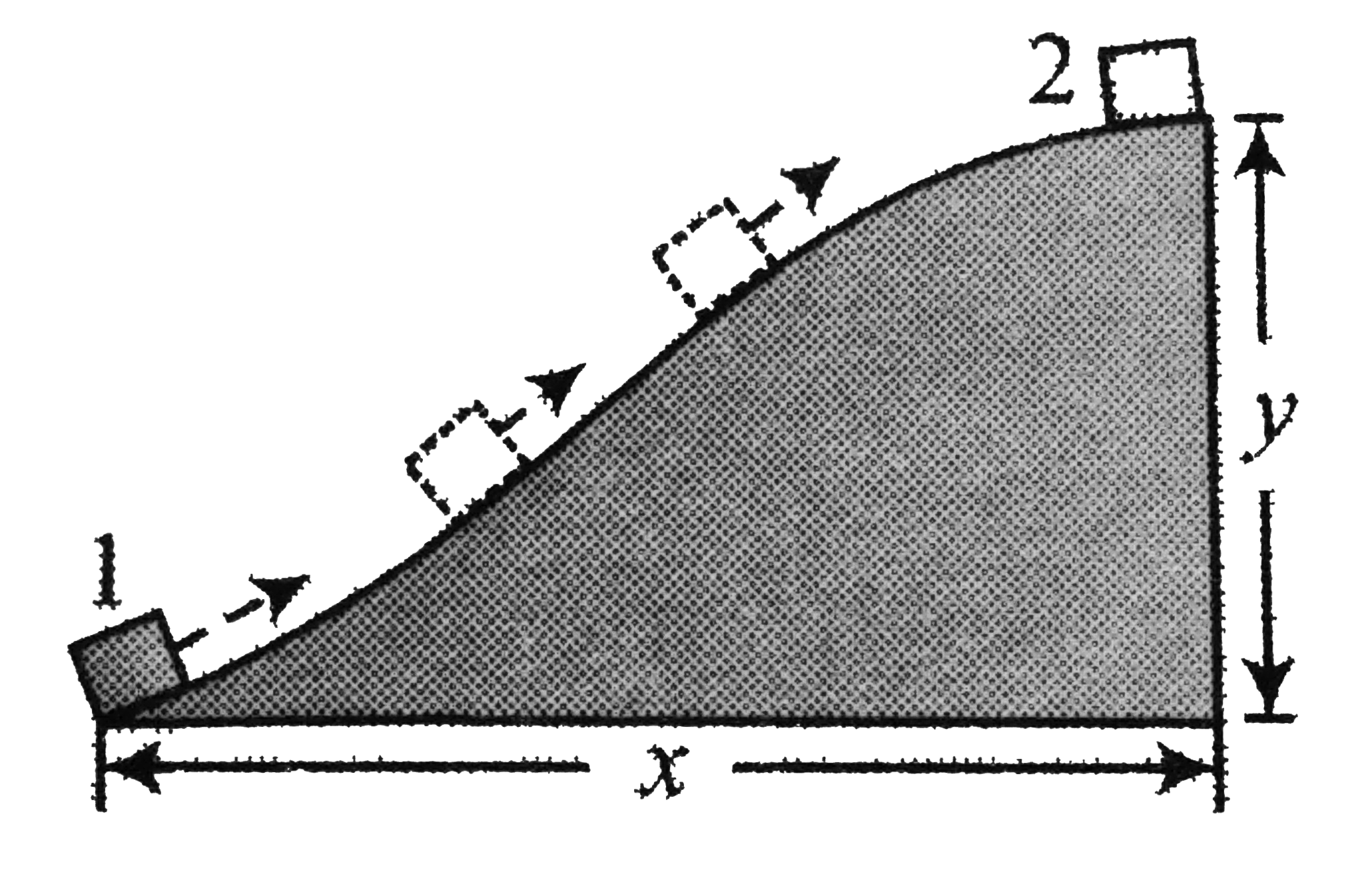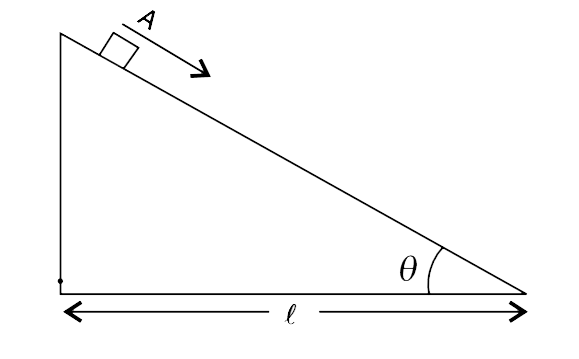A body is filled quasi statically to the top of a mountain through path 1 and path 2 by applying a force from bottom in the figure. Coefficient of friction between the body and surface is μ then

work done by gravity and friction is less through path 1 than 2
Work done by gravity and friciton is more through path 1 path 2 .
Work done by gravity is same in both path.
Work done by friction is same in both path.
Step by step video & image solution for A body is filled quasi statically to the top of a mountain through path 1 and path 2 by applying a force from bottom in the figure. Coefficient of friction between the body and surface is mu then by Physics experts to help you in doubts & scoring excellent marks in Class 12 exams.
Updated on:21/07/2023Topper's Solved these Questions
- TEST PAPERSBOOK - BANSALCHAPTER - TEST PAPERSEXERCISE - PHYSICS PART (A)
32 Videos
- TEST PAPERSBOOK - BANSALCHAPTER - TEST PAPERSEXERCISE - PHYSICS PART (B)
3 Videos
- TEST PAPERSBOOK - BANSALCHAPTER - TEST PAPERSEXERCISE - PHYSICS PART- C
4 Videos
- SEMICONDUCTORSBOOK - BANSALCHAPTER - SEMICONDUCTORSEXERCISE - CBSE Question
32 Videos
Similar Questions
If angle of repose is ϕ, the coefficient of static friction between body and the plane is
View SolutionA body of mass m starts from rest down a plane of length l at an angle θ with the horizontal. (a) find the body's speed at the bottom (b) How far will it slide horizontally on a similar surface after reaching the bottom of the incline. The coefficient of friction between the body and the plane is μ.
View Solution
Knowledge Check
A body of mass m kept on the floor of a lift moving downwards is pulled horizontally. If μ is the coefficient of friction between the surface in contact, then
Africtional resistance offered by the floor is 2 μmg, when lift moves up with a uniform velocity of 5 m/s.Brictional resistance offered by the floor is μumg, when lift moves lift moves up with uniform velocity of 3 m/s.Cfrictional resistance offered by the floor is 4.8μmg, when lift accelerates down with an acceleration of 4.8m/s2Dfrictional resistance offered by the floor must lie in the range 0≤f<∞Find the maximum distance 'd' from the horizontal centre line of the drawer at which the force F may be applied and still allow the drawer to be opened without binding at the corner. Neglect friction on the bottom of drawer and take the coefficient of static friction between the both sides of the drawer and the tube to be equal to two (μ=2).
 A1.5mB2mC3mD1.2m
A1.5mB2mC3mD1.2mA car is taking turn on a circular path of radius R. If the coefficient of friction between the tyres and road is μ, the maximum velocity for no slipping is
AμRgB2μRgC(μRg)1/2D(2μRg)1/2
A body with zero initial velocity slips from the top of an inclined plane forming an angle α with the horizontal. The coefficient of friction μ between the body and the plane increases with the distance s from the top according to the law μ=bs. After what distance the body will stop.
View SolutionA block of mass m is slowly pulled along a curved surface from position 1 and 2. If the coefficient of kinetic friction between the block and surface is μ, find the work done by the applied force.

View SolutionA block of mass m = 2kg is accelerating by a force F = 20N applied on a smooth light pulley as shown in the figure. If the coefficient of kinetic friction between the block and the surface is μ=0.3, find its acceleration.

View SolutionA block of mass m is supported on a rough wall by applying a force in figure Coefficient of static friction between block and wall is μ
For what range of value of p , the block remain in static equilibrium ?

View SolutionA small body A starts sliding down from the top of a wedge (see fig) whose base is equal to l. The coefficient of friction between the body and wedge surface is μ=1.0. At what value of angle q will the time of sliding be least?

View Solution
